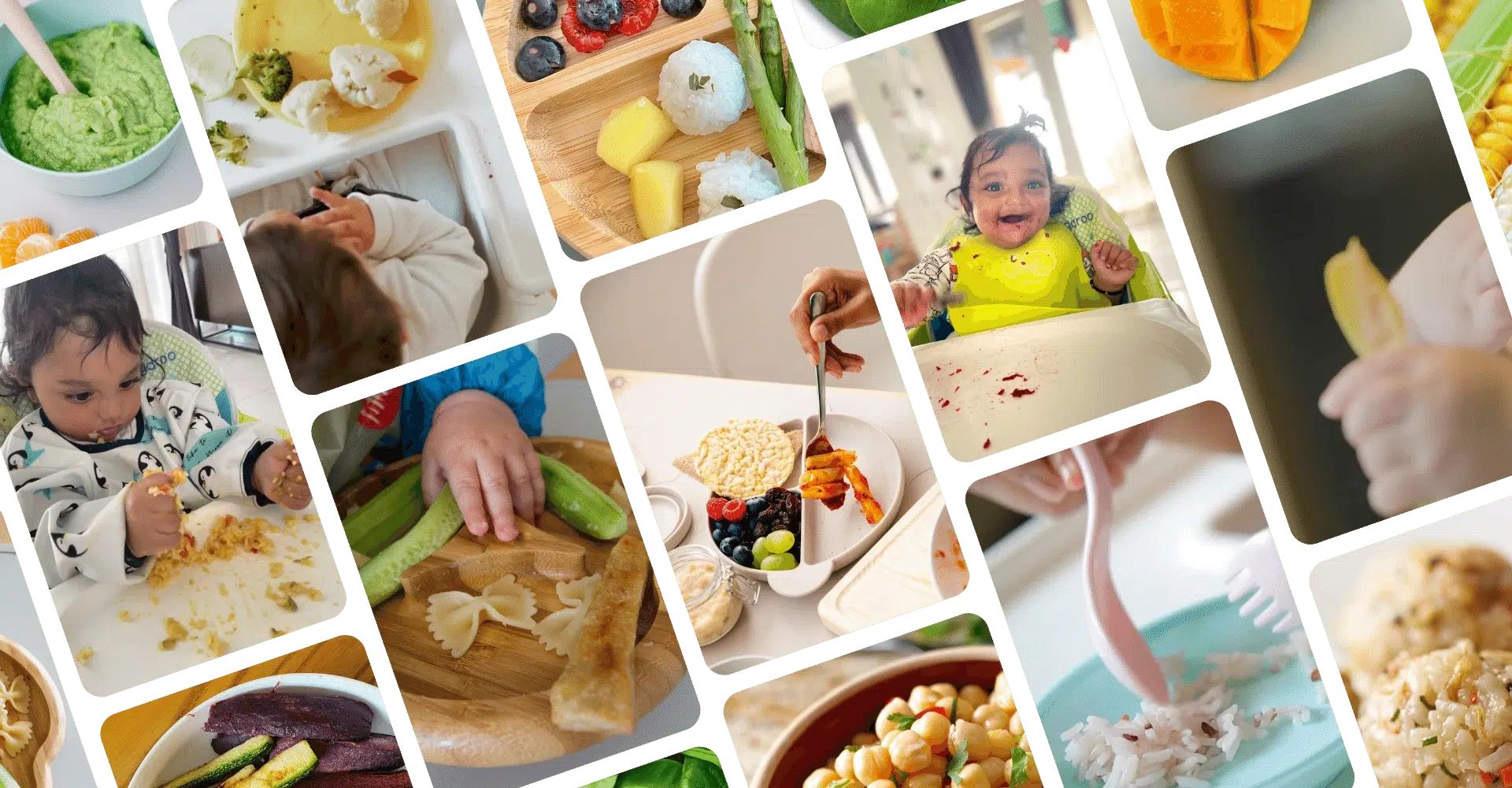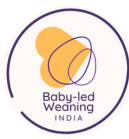
Baby-led weaning (BLW) is a way of introducing solid foods to your baby that lets them take the lead. Instead of feeding them purées with a spoon, BLW allows babies to feed themselves right from the start. This method encourages your baby to explore food, develop important skills, and build a healthy relationship with eating.
What is Baby-Led Weaning (BLW)?
Baby-led weaning (BLW) is an approach to introducing solids where babies feed themselves instead of being spoon-fed purees. At around six months, when they show signs of readiness, babies eat soft, finger-sized pieces of food. This method encourages independence, motor skill development, and healthy eating habits. Parents provide nutritious food options, and babies decide what and how much to eat.
How BLW Differs from Traditional Weaning Methods
Feeding Style: BLW encourages self-feeding, while traditional weaning involves spoon-feeding.
Food Texture: Baby-led weaning starts with soft, whole first foods; traditional weaning begins with purees.
Control: Babies regulate their intake in BLW, while parents control portion sizes in traditional feeding.
Skill Development: BLW supports chewing and motor skills early, unlike spoon-feeding.
Family Meals: BLW allows babies to eat modified versions of family meals, fostering inclusion.
Why Choose Baby-Led Weaning?
Promotes Independence: Babies learn to self-feed and explore food textures.
Encourages Healthy Eating Habits: Helps babies recognize hunger and fullness cues.
Supports Motor Skills Development: Enhances hand-eye coordination and chewing.
Facilitates Family Mealtime Inclusion: Babies eat family meals with appropriate modifications.
Reduces Picky Eating: Early exposure to varied textures and flavors may prevent fussy eating.
Simplifies Meal Preparation: No need for separate baby food; family meals are adjusted.
When to Start Baby-Led Weaning
Baby-led weaning typically begins at six months, when a baby meets these developmental milestones:
Good Head Control: The baby can sit upright without support.
Interest in Food: Reaches for food and follows it with their eyes.
Loss of Tongue-Thrust Reflex: No longer pushes food out of their mouth.
Ability to Grasp Objects: Can hold and bring food to their mouth.
How to Start Baby-Led Weaning
Choose the Right Time: Start when your baby is alert, well-rested, and not too hungry.
Set Up a Safe Eating Environment: Use a supportive high chair and supervise meals.
Introduce First Foods: Offer soft, graspable baby-led weaning starter foods like steamed carrot sticks, avocado slices, and banana.
Encourage Self-Feeding: Let babies explore food at their own pace; avoid putting food in their mouth.
Offer a Variety of Foods: Introduce different textures and flavors gradually.
Monitor for Allergies: Introduce common allergens like eggs, dairy, and wheat one at a time.
Avoid Unsafe Foods: No honey before 12 months, whole nuts, or foods with added salt and sugar.
Stay Calm with Gagging: Gagging is a normal reflex as babies learn to handle food.
Trust Your Baby’s Appetite: Babies self-regulate their intake; continue breastmilk or formula alongside solids.
Benefits of Baby-Led Weaning BLW
Enhances Self-Regulation: Studies suggest baby-led weaning (BLW) may reduce the risk of childhood obesity by encouraging babies to follow their hunger cues.
Supports Speech Development: Chewing different textures strengthens oral muscles, aiding speech development.
Promotes Iron Absorption: Offering iron-rich foods like lentils, spinach, and fortified grains can support cognitive and physical growth.
Encourages Positive Mealtime Habits: A 2018 study in the Journal of Nutrition found that BLW fosters healthier long-term eating behaviors.
Common Concerns and Solutions
Choking Risks: Baby-led weaning (BLW) does not increase choking risks if appropriate food textures are offered. Always supervise meals and avoid hard, small foods.
Messiness: BLW can be messy, but this is part of sensory exploration. Use bibs and floor mats.
Nutritional Balance: Ensure a balanced diet by including proteins, healthy fats, and iron-rich foods.
Know your guide

Hello, amazing parents! I’m Riddhi Verma Ayyagari, a Stanford-certified Child Nutritionist and Baby-Led Weaning Expert. With years of experience and a proven approach, I’ve helped 8000+ of families navigate child nutrition, from starting solids to tackling picky eating.
Make mealtimes easier and more enjoyable with personalized 1:1 Sessions and my expert-led MasterClass. Start your journey to stress-free feeding today!
FAQs on Baby-Led Weaning
Baby-Led Weaning (also known as BLW) is an approach where babies start eating soft, finger-sized pieces of food once they’re ready—usually around six months old. This method encourages self-feeding and allows babies to explore food textures and flavors independently.
Baby-led weaning typically starts around six months of age when babies show signs of readiness, such as good head control, the ability to sit upright, and interest in food.
Signs of readiness include good head control, sitting upright with minimal support, showing interest in food, losing the tongue-thrust reflex, and the ability to grasp objects and bring them to their mouth.
Milk is the primary source of nutrition until 12 months, so focus on offering a variety of foods rather than quantity.
Yes, as long as you start at the right time and serve foods that are soft and easy to chew. Knowing basic first aid and choking prevention tips can help you feel more confident.
Yes, babies can use their gums to chew soft foods, even without teeth.
Yes! Keep breastfeeding or formula-feeding while offering a variety of healthy foods. Iron-rich foods like eggs, lentils, and soft meats are especially important at this stage.
Yes, BLW can be messy, but it’s part of the fun! Use bibs, highchair mats, and easy-to-clean foods to make cleanup easier.
Educate them about the benefits of BLW, demonstrate how it works, and share resources to help them understand the process.
Conclusion: Why Baby-Led Weaning Could Be Right for Your Family
Encouraging a Lifelong Positive Relationship with Food
Baby-led weaningBLW promotes healthy eating habits, independence, and a positive food experience for your baby.
Key Takeaways for First-Time Parents
Follow your baby’s lead, introduce a variety of foods, and ensure safety during mealtimes.
Next Steps: Where to Find Support and Resources
Consult with Riddhi Verma Ayyagari, founder of Baby-Led Weaning India and a child nutrition & developmental behaviour expert, certified by Stanford University for personalized guidance. With years of experience and a proven approach, I’ve helped 8000+ of families navigate child nutrition, from starting solids to tackling picky eating.
Work with me in my Personal Sessions for personalized support or, take the next step to join the MasterClass for expert advice on starting solids, overcome picky eating, meal planning, and transform mealtime into a joyful and stress-free experience for both you and your child!
Don’t put food into your baby’s mouth for her or try to persuade her to eat more than she wants!
